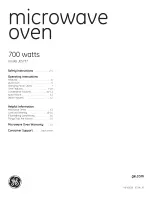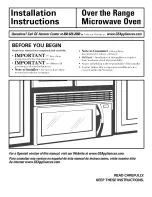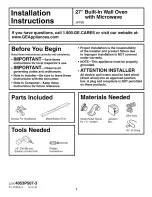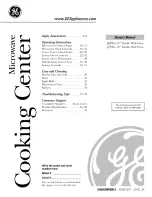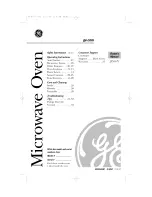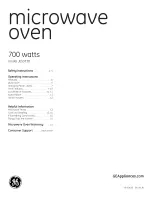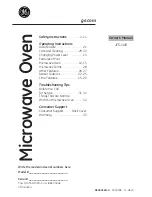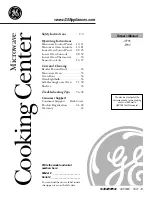
31
Vegetables
Notes
■
Fresh vegetables: cut into pieces of equal size. Add
2 tablespoons of water for every 100 g vegetables.
■
Frozen vegetables: this programme is only suitable for
blanched, not pre-cooked vegetables. It is not suitable for
frozen vegetables in cream sauce. Add 1 to 2 tablespoons of
water per 100 g. Do not add water to spinach or red
cabbage.
Baked potatoes
Note:
Use potatoes of equal size. Wash the potatoes and prick
the skin several times. Place the potatoes on the wire rack
while they are still damp.
Chicken halves
Note:
Place the chicken halves on the wire rack with the skin
side facing up. Place the wire rack in the glass pan so that it
catches the dripping fat or meat juices.
Resting times
Some dishes need to rest in the oven after the programme has
ended.
Programme table
Tested for you in our cooking studio
Here you will find a selection of recipes and the ideal settings
for them. We will show you which type of heating and which
temperature or microwave power setting is best for your meal.
You can find information about suitable accessories and the
height at which they should be inserted. There are also tips
about ovenware and preparation methods.
Notes
■
The values in the table always apply to food placed into the
cooking compartment when it is cold and empty. Only
preheat the appliance if the table specifies that you should do
so. Before using the appliance, remove all accessories from
the cooking compartment that you will not be using.
■
Do not line the accessories with greaseproof paper until after
they have been preheated.
■
The times specified in the tables are only guidelines. They will
depend on the quality and composition of the food.
■
Use the accessories supplied. Additional accessories may be
obtained from specialist retailers or from the after-sales
service.
■
Always use an oven cloth or oven gloves when taking
accessories or ovenware out of the cooking compartment.
Defrosting, heating up and cooking with the
microwave
The following tables provide you with numerous options and
settings for the microwave.
The times specified in the tables are only guidelines. They may
vary according to the ovenware used, the quality, temperature
and consistency of the food.
Time ranges are often specified in the tables. Set the shortest
time first and then extend the time if necessary.
It may be that you have different quantities from those specified
in the tables. A rule of thumb can be applied:
Dish
Resting time
Vegetables
approx. 5 minutes
Potatoes
approx. 5 minutes. First pour off the
remaining water.
Rice
5 to 10 minutes
Progr. no.
Suitable food
Weight range in kg Cookware/accessories, shelf height
Defrost
P1
Meat and poultry Joints Flat pieces of meat
Mince Chicken, poulard, duck
0.2 - 2.0 kg
Shallow cookware without lid
P2
Fish: whole fish, fish fillet, fish cutlet
0.1 - 1.0 kg
Shallow cookware without lid
P3
Bread and cake*
Bread, whole, round or long, bread in slices,
sponge cake, yeast cake, fruit flan
0.2 - 1.5 kg
Shallow cookware without lid
Cooking
P4
Potatoes
Boiled potatoes, potatoes boiled in their skins
0.2 1.0 kg
Dish with lid
P5
Rice
0.05 0.3 kg
High-sided dish with lid
P6
Fresh vegetables
Cauliflower, broccoli, carrots, kohlrabi, leeks,
peppers, courgettes
0.15 1.0 kg
Dish with lid
P7
Frozen vegetables
Cauliflower, broccoli, carrots, kohlrabi, red cab
-
bage, spinach
0.15 1.0 kg
Dish with lid
P8
Baked potatoes
Weight per potato approx. 200 g - 250 g
0.2 1.5 kg
Wire rack
P9
Frozen bake, e.g. lasagne
0.3 1.0 kg
P10
Chicken, halved
0.5 1.8 kg
Glass pan and wire rack
Observe the signals for stirring and turning.
* Cream cakes, buttercream cakes, cakes with frosting, icing or gelatine are unsuitable.





















